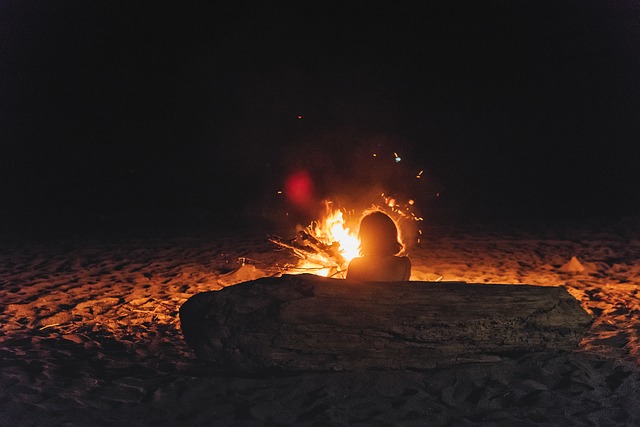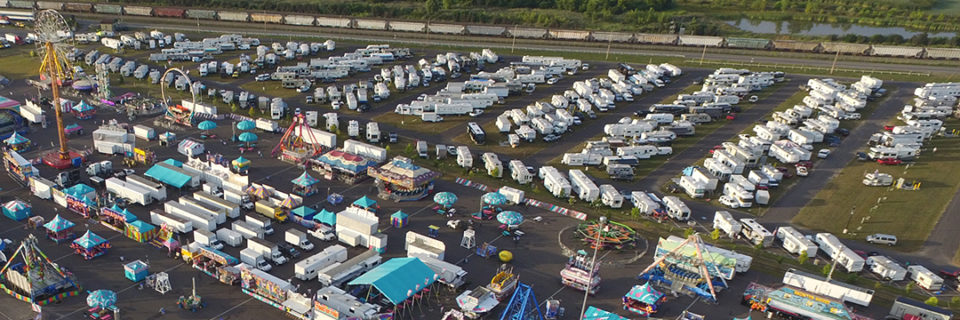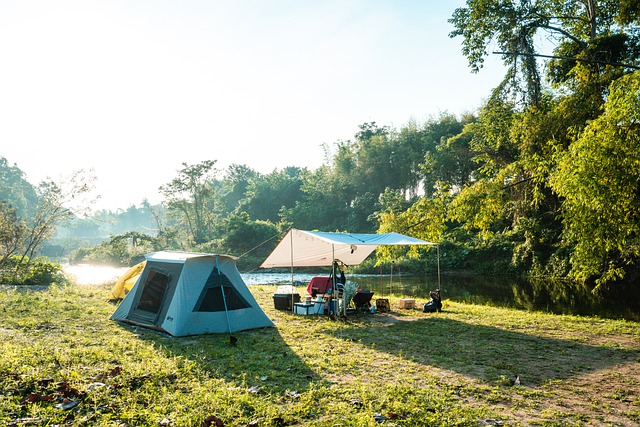
If you are looking for a place to camp in Minnesota, consider one of the state forests. There are over 4,000,000 acres of wilderness in the state forests. Minnesota state forest camping sites include a camp site with a tent pad, fire ring, and clearing. However, many state forests also allow dispersed camping, or unimproved camping without amenities. Camping in state forests requires that you leave no trace.
Minnesota's state forests are governed by the same terminology and rules. This means that you can expect the same level of service and amenities. Dispersed camping is allowed in most state forests, even though there aren't designated campsites. A campsite is available within a few hundred yards of any national park for those who are permitted to camp in the forest. State forests offer a variety of activities and attractions, which can be enjoyed by campers.

Minnesota's state forests ban dispersed camping. There are however other options. Superior National Forest boasts 18 rustic camping sites with car camping. Chippewa National Forest boasts more than 30 "dispersed” campsites. Dispersed camping isn't as convenient, but it has its advantages. You can enjoy Minnesota's natural beauty without worrying about a crowded campground.
Renting a cabin or an RV is a great way to have a camping experience in a state park. Minnesota has many state forests, some of which have cabins or other facilities. Beltrami Island State Forest is the largest state forest, covering 703,382 acres. It is home of the five largest Wildlife Management Areas in Minnesota and contains the headwaters to five rivers. You can rent a cabin, or any other type of property, but there are not facilities for overnight camping.
A campsite can be booked in Minnesota state forests. You can choose the site that best suits your camping requirements. Online reservations are possible in many of these forests. There are several ways to make reservations in a state forest. To avoid crowds, it is best to visit the Minnesota state forests during the winter and autumn seasons. And don't forget to visit some of the lakes in the area.

In the Minnesota state forests, camping is possible during summer. There are several campsites available in the state forests, and you can choose the one that best fits your preferences. Because of its size and proximity to the wilderness, a state forest is a great place for camping. However, there are not any campsites in Minnesota's National Forests. You can visit all the parks within the park with a vehicle permit.
FAQ
Is hunting dangerous?
Yes, hunting is dangerous.
There are several ways you can injure yourself.
Improper shooting techniques are one way. One example is improper shooting techniques.
An attack by another animal is also a risk.
Hunting accidents happen every year. Guns cause many deaths and serious injuries.
Hunters should always keep their guns unloaded until they have reached their destination.
They should also make sure their guns are not loaded when they go into the woods.
Always keep an open mind. Always be aware of your surroundings and pay attention to any sounds.
You should not approach any animal unless you can defend yourself.
Never chase after prey. Instead, wait patiently to see them.
Avoid taking shortcuts. They can lead to injury or death.
Be careful around cliffs and other places where you cannot see what's below.
Stay away from rivers and streams. These areas can flood suddenly.
Hunting is a time to forgo alcohol. It can affect your judgment and slow down your reaction times.
All safety equipment should be kept close to your body. You should always carry a first aid kit and flashlight.
Knowing how to respond to an emergency is crucial. If you do not know how to perform CPR or administer first aid, find someone who knows how to help you.
The U.S. Department of Agriculture (USDA), estimates that about 1 percent of hunters kill deer each year.
The USDA estimates that approximately 6.5 million Americans hunt buck. Only 2.2 million shoot one.
This means that approximately 0.6 percent of hunters kill deer every year.
What guns can you legally use?
There are many different types of weapons you can use while hunting.
Hunters usually use rifles or shotguns or handguns as well muzzle-loading firearms.
Rifles are made to fire bullets over long distances. Shotguns can be loaded with pellets. Handguns are designed to fire bullets through the hand. Muzzle-loading firearms are similar to modern-day pistols.
Crossbows are used to shoot arrows. Bowhunters are archery weapons.
Special training is required to hunt with a crossbow. You must first learn how to properly aim and shoot the weapon.
Is it possible to hunt without a licence?
Yes, it is possible to hunt without a licence. This is a violation of the law.
You could be subject to fines or even imprisonment.
Some states allow residents to hunt without a license. You can hunt in some states without a permit if you check with your state department for natural resources.
What are the many benefits of hunting?
Many cultures have long practiced hunting. It was used to obtain food, clothing and shelter. In modern times, people still hunt for sport, but also for food and recreation. The meat of hunted animals is typically eaten within minutes after they are killed, while skin, hair, feathers, bones and antlers can be sold as trophies.
Hunting is not only a way you eat, but it's also a way you live.
Hunting is a sport that builds strong bonds between family members and friends. They share stories, memories and laughs around campfires or over meals.
Hunters enjoy nature and wildlife, which helps them appreciate life on Earth.
When they care for game animals, they learn responsibility and respect for others.
Conservation is a way for hunters to become better citizens. They work to protect habitats, species, and the environment. They understand how much land and water we need to survive.
Hunters are part a larger community. Their families depend on them. They help each other. They support local businesses.
Hunters are known for their generosity. Many donate money to organizations that help children, elderly people, veterans, and other groups.
Hunters may also offer their time and help to those in need. For example, they might work with the Humane Society or the Red Cross.
What's the popularity of hunting in America?
Hunting is a favorite American pastime. Hunting equipment and supplies are worth more than $8 billion annually in the United States. The average hunter spends about $1,000 annually.
Many hunters hunt not as a hobby, but as a way of relaxing. Nearly 50 million hunters are estimated to live in the United States. This number includes both men and women.
Hunters come from all walks of life. These hunters can range in age from children to seniors. Some hunters have been doing it since the beginning, while others are just getting started.
A hunter's most important reason is to enjoy being outside. Hunting is an excellent way to get in touch with nature and feel the freedom of being free.
Hunting can be an enjoyable social activity. Hunters hunt together often as a team. These groups could include friends, family, or co-workers.
Hunting has also become a competitive sport among sportsmen. People compete against themselves and other hunters to see how well they can shoot different types of animals.
Hunters can also compete with other states to break the previous record for biggest deer kill. These records are often set by professional hunters.
Statistics
- - Percent of residents with paid hunting licenses: 0.7%- (stacker.com)
- Less than 1% of Hawaii's population has a hunting license. (stacker.com)
- Licenses dropped from a peak of roughly 17 million in the 1980s to 15 million in 2019, according to The Seattle Times. (stacker.com)
- In less than 20 years, Rhode Island saw a 40% drop in the number of hunting licenses for residents, according to The Valley Breeze. (stacker.com)
External Links
How To
How to hunt wild Hogs
Large animals, wild hogs can be found across North America, Africa and Asia. Wild hogs are omnivores; they eat vegetation and small animals such as rabbits, mice, birds, insects, and fish. They usually feed at night. They usually feed at night. After the six-month gestation period, one piglet will be born. Every two years, a sow will give birth to a piglet. Wild hogs can be solitary, but they may live in herds.
The average weight of a wild boar is 200 pounds (90 kg). Their head length ranges between 10-12 inches (20-25 cm) and 20-30 inches (30-50 cm) respectively. Wild pigs have short tails, long legs and broad shoulders. They have a thick layer under their skin of fat.
They are very sensitive to smell, hearing, sight, and touch. These senses help them detect danger and find food. They can run upto 35 miles an hour (56 km/h), and can jump up to 15 feet (4m) in a single bound. They have sharp teeth. They are aggressive when defending themselves against predators.
Hunting wild Hogs can be difficult as they are agile, intelligent, and elusive. They must be carefully tracked by hunters. Hunting too soon can cause the animal to escape. Hunters who shoot too soon can kill the animal before it reaches cover.
There are many different hunting methods that can be used to kill wild boars. The most common method of killing wild hogs is to shoot. This involves hunting the animal down and waiting for it to come within range. Another method is trapping. The trapping method involves placing traps close to water sources that the hogs can drink. Traps often include a scent lure like corn meal mixed with peanut butter. When the trap is opened, the hunter shoots a trapped pig.
Another method is snaring. Snaring is a method that uses a noose of rope to catch the pork. The best time to catch a pig is during mating season.
Other methods include netting, spearing, and poisoning. To stop pigs from breathing, spearing and netting involve putting a spear or net through the neck of the animal. Poisoning is when the poison is injected into the pig's throat.
Hunting wild hogs is a challenging sport. Hunters should be prepared for winter. Hunting in colder areas may require the use of snowshoes. To help track animals, some hunters have dogs.